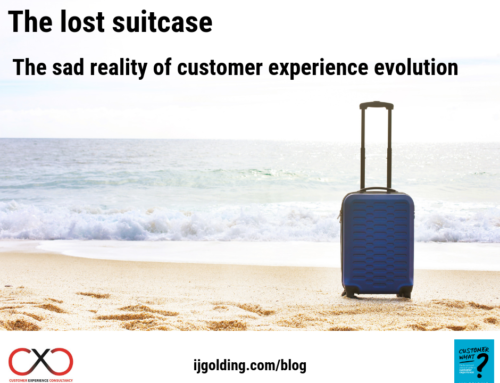
As the proud owner of a beautiful Victorian house, my wife Naomi and I know full well the challenges that looking after such a valuable, historic asset entail. Built in the late 1800’s, the house has required numerous ‘makeovers’ over the decades to maintain its grandeur. Maintaining it is not easy (or cheap) though. There are times when it feels a little like painting the Golden Gate Bridge – as soon as you finish, you have to start all over again.
The problem with maintaining an asset is that it is essential to keep on top of things. If you leave it too long to do essential maintenance, your ability to address the issues gets compromised. It is all too tempting to keep putting things off though – until one day, you realise that you may have left it a little too late…… and your house falls down!!
Whilst I am pleased to say that our house is a long way from falling down, the analogy is the perfect one to describe what businesses all over the world may well be doing with their valuable assets. Failing to look after an organisation that has been built over the years could have devastating consequences – we only need to look to the plethora of companies who have suffered ‘implosion’ over the last few years to see how true this is – Nokia, Blockbuster and Kodak being among the most prominent. When your house falls down, the inhabitants are left homeless. If a company ceases to exist, its employees are left jobless. These are devastating consequences to endure; yet are they avoidable consequences?

Three enormous organisations who failed to address their ‘burning platforms’
All three organisations suffered from the effect of a radically changing business environment. None of them were destroyed by a freak act of mother nature. They all failed to address what could be described as a ‘burning platform’ – I strongly believe that if they had been proactive in innovating and transforming their businesses, they may well still be the force they once were (although this is very easy to say in hindsight!). In the same way that a Victorian House should remain standing for hundreds of years if maintained correctly, a business should also exist indefinitely if it continually adapts to the changing needs and expectations of its customers.
So just what is a ‘burning platform’? Whatever its origin, the “burning platform” has become a nearly ubiquitous business term for a situation that is so dire – so fraught with danger – that people will focus all of their energy to overcome the threat so they will become secure and safe again. Sadly for Kodak, Blockbuster and Nokia, they reacted to their respective ‘dire situations’ just a little too late.
I have had a number of recent conversations with different leaders of organisations across sectors on this subject. The overwhelming view is that for Customer Experience to get ‘on the agenda’ in many businesses, they must be in the ‘burning platform’ state. In other words, it is difficult to get the focus that transforming mindsets to become more Customer Centric requires, if the business is not in need of ‘help’.
Their argument is that when businesses are successful – making significant profits and achieving ‘double digit’ growth – if they do not happen to be Customer Focused in achieving their success, why do anything differently? They believe that the business needs to be in a declining state for leadership to look towards Customer Experience as a way of mitigating decline and differentiating the organisation for future sustainability and growth.

This is definitely one perspective – although not one I necessarily agree with. There is no doubt that it is difficult to convince business leaders of the need to change behaviour and mindset if their organisation is already hugely successful. Yet just because it is difficult, it does not mean it is impossible. Truly transformational business leaders will do what is RIGHT for their business – irrespective of the financial state that business is in. From Jack Welch, to Jeff Bezos, to Richard Branson – all of them have had a belief that doing the right things for customers will deliver commercial results as well as satisfied, loyal customers. They have not waited for the platform to start burning.
However, we must acknowledge that transformational leaders – in the truest sense of the word – are not that common in business – now or ever. As such, the reality is, however I much I theorise, that it is far more likely a business will be able to focus on Customer Experience when it is in a state of ‘flux’, than when it is in a comfortable, successful state.
Does that mean that if your organisation has started to put effort into Customer Experience transformation that the platform may be burning? It is possible – but do not panic!! It may not be that bad. If that is what it takes for your businesses to re-focus on the customer, then so be it. BUT….. if you are in a business that is already successful commercially – one that is in profit and growing – you would do very well to help maintain and sustain that position by starting to think about improving your Customer Experience NOW (if you are not already).
The thing about Customer Experience is that whatever way you look at it – you have one already. Whether your business is conscious of it or not, your Customers have a perception of the Experience you deliver to them. If you are able to proactively and continuously improve that perception, you should have a successful business for many years to come. If you wait for the platform to start burning, it may just be too late to save it!






Ian this is a great blog – customers are the lifeline of any business – without them there is no income. If we treat them with respect, care and understanding they will continue to be loyal and that income will stay. I agree that too often companies are getting bogged down with internal systems and processes and they take their focus away from the customer – what may seem better for the internal environment of a business may not necessarily be the best for the external environment and customer.
Your blogs and comments are definitely helping businesses maintain focus on the customer: Keep up the good work!
Thank you so much for your lovely feedback Frances – it is fantastic that you find my writing of value – if it helps others in any way, then it makes it all the more worthwhile! I hope all is well with you!